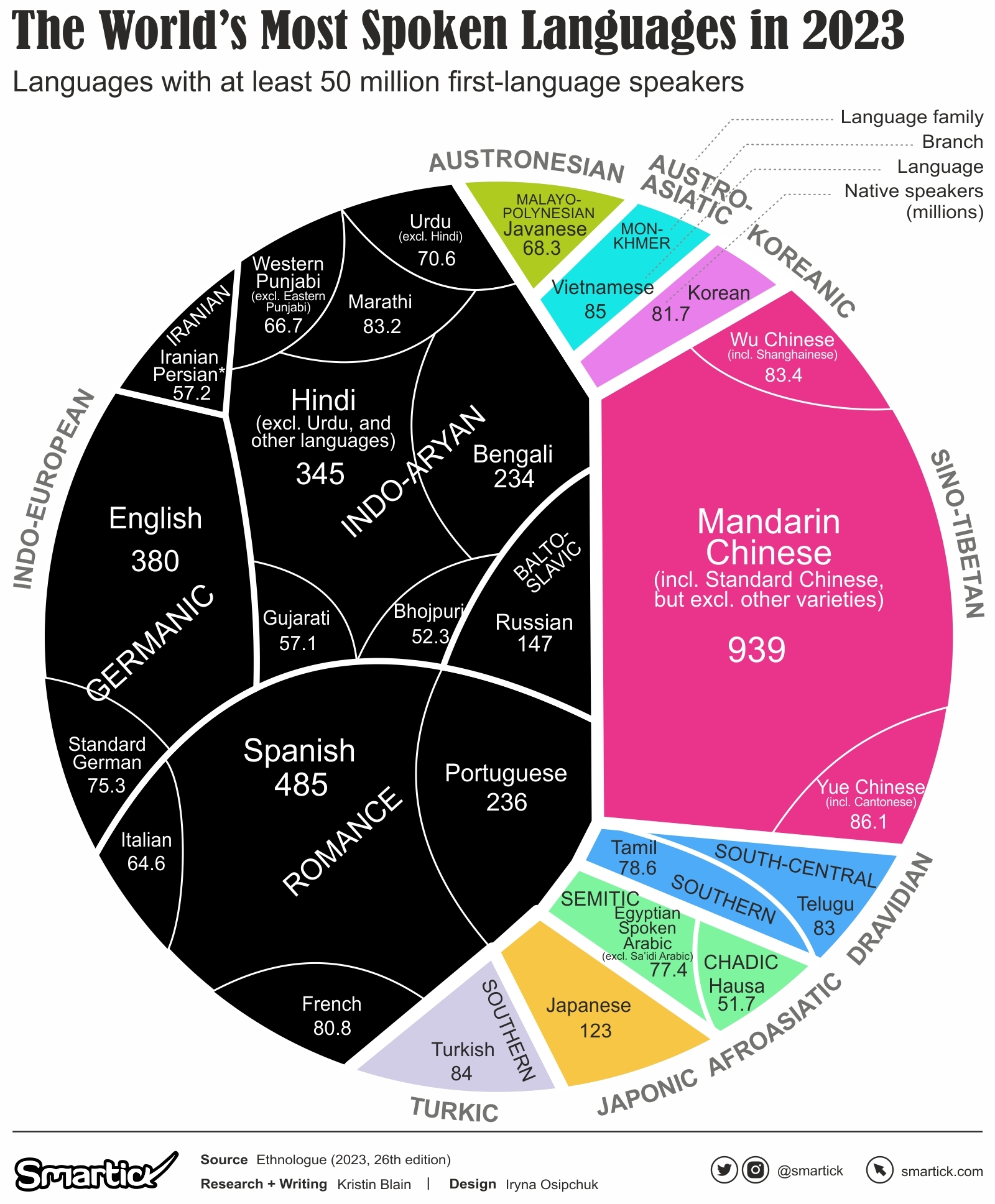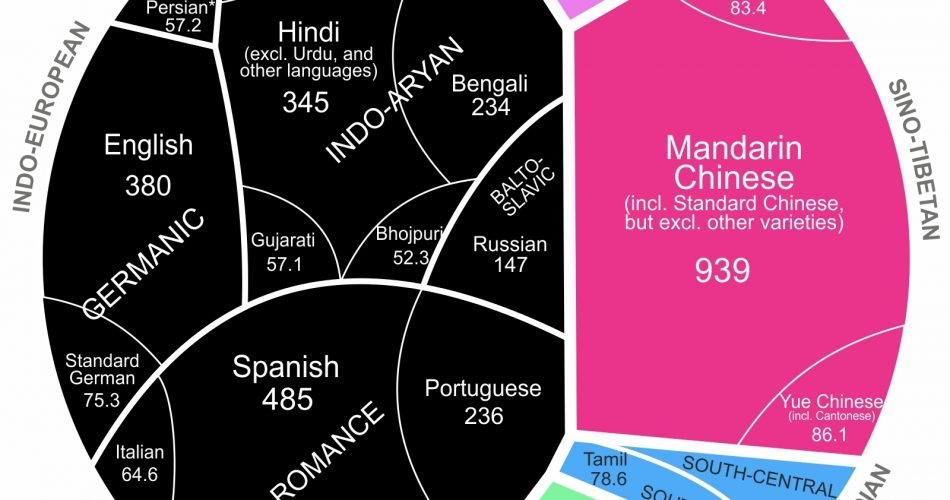
In a world filled with over 7,000 languages, communication serves as the lifeblood of human interaction, enabling the exchange of ideas, emotions, and cultures. Ethnologue: Languages of the World (2023, 26th edition) provides valuable insights into the most widely spoken languages on the planet, highlighting their significance and impact on global affairs.

Mandarin Chinese: A Powerhouse of Communication
With an astounding 939 million native speakers, Mandarin Chinese reigns as the most spoken language worldwide. Belonging to the Sino-Tibetan language family, Mandarin Chinese boasts its global dominance. It’s important to note that this figure includes Standard Chinese while excluding other varieties. The prevalence of Mandarin Chinese illustrates the enduring influence of Chinese culture and the country’s rise as a global economic power.
Spanish: A Language of Colonial Legacies
Spanish, with its 485 million native speakers, holds sway over numerous regions due to the historical colonization of many parts of the world by Spain. As a Romance language within the Indo-European language family, Spanish serves as a lingua franca across Latin America, Spain, and Equatorial Guinea. Its influence extends beyond borders, contributing significantly to literature, art, music, and cinema.
English: The Global Lingua Franca
With 380 million native speakers, English stands tall as a global language connecting people from diverse backgrounds. Originating from the Germanic branch of the Indo-European language family, English has become the lingua franca of international communication, business, and diplomacy. Its prevalence can be attributed to the influence of the British Empire, technological advancements, and the rise of English-speaking countries as global leaders.
Hindi: Cultural and Linguistic Vibrancy
Hindi, spoken by 345 million people, holds immense cultural and linguistic significance in India. As an Indo-Aryan language within the Indo-European language family, Hindi exhibits diverse variations across different regions. It serves as the official language of the Indian government and contributes significantly to the rich tapestry of Indian literature, film, and music.
Portuguese: Bridging Continents and Cultures
Portuguese, with its 236 million native speakers, bridges continents and cultures, reflecting the historical influence of Portuguese colonialism. As a Romance language within the Indo-European family, it is the official language of multiple countries, including Portugal, Brazil, Angola, and Mozambique. Portuguese plays a vital role in promoting cultural exchange, commerce, and tourism across these diverse regions.
Bengali: The Soul of South Asia
Bengali, spoken by 234 million people, occupies a significant place in South Asia. As an Indo-Aryan language within the Indo-European family, Bengali embodies the cultural heritage of Bangladesh and the Indian state of West Bengal. It has produced a rich literary tradition, with luminaries such as Rabindranath Tagore shaping the world of literature and poetry.
Russian: A Global Language of Influence
Russian, with its 147 million native speakers, holds sway as an international language, particularly in the post-Soviet states. Belonging to the Balto-Slavic branch of the Indo-European family, Russian serves as a medium of communication, commerce, and diplomacy across a vast territory. Its global importance is further underscored by its status as one of the official languages of the United Nations.
Japanese: Unique Features and Cultural Significance
Japanese, spoken by 123 million people, belongs to the Japonic language family. Renowned for its unique writing system, consisting of kanji, hiragana, and katakana, Japanese reflects the rich cultural heritage of Japan. The language’s intricate honorifics, poetic traditions, and influence on technology and popular culture have captivated the world’s imagination.
French: A Language of Elegance and Global Presence
With 80.8 million native speakers, French maintains its status as an international language. As a Romance language within the Indo-European family, French extends its cultural influence beyond France, resonating across multiple regions and continents. It plays a prominent role in diplomacy, fashion, cuisine, and the arts, making it an essential language for cultural appreciation and international exchange.
The exploration of these diverse languages highlights the immense linguistic richness present in our world. Language diversity not only enables effective communication but also fosters understanding, empathy, and multiculturalism. As we move forward, it is crucial to appreciate and preserve linguistic heritage, recognizing the importance of each language’s unique contribution to our global society. By celebrating linguistic diversity, we ensure a harmonious and interconnected world where cultures thrive and flourish.

